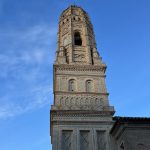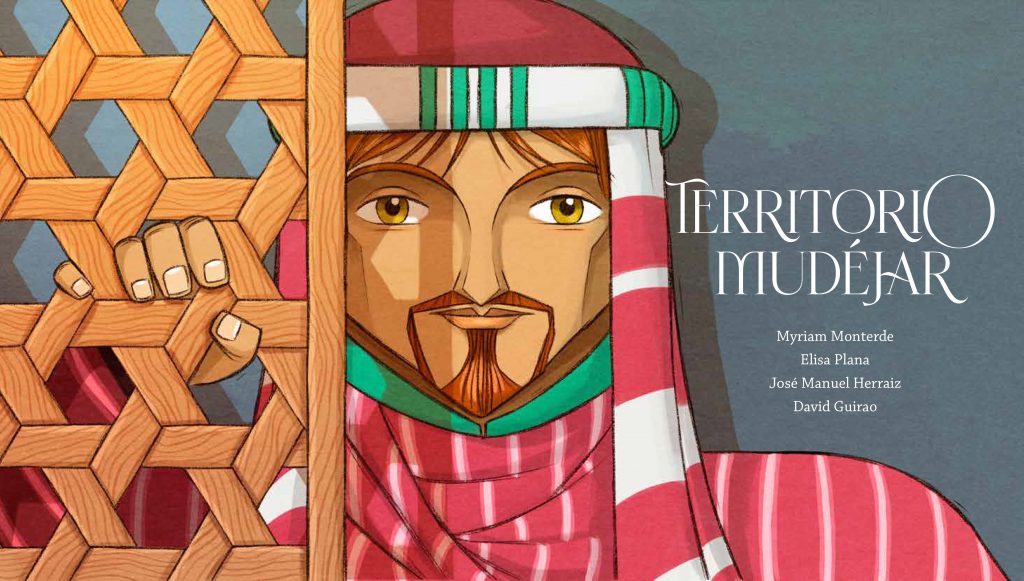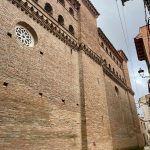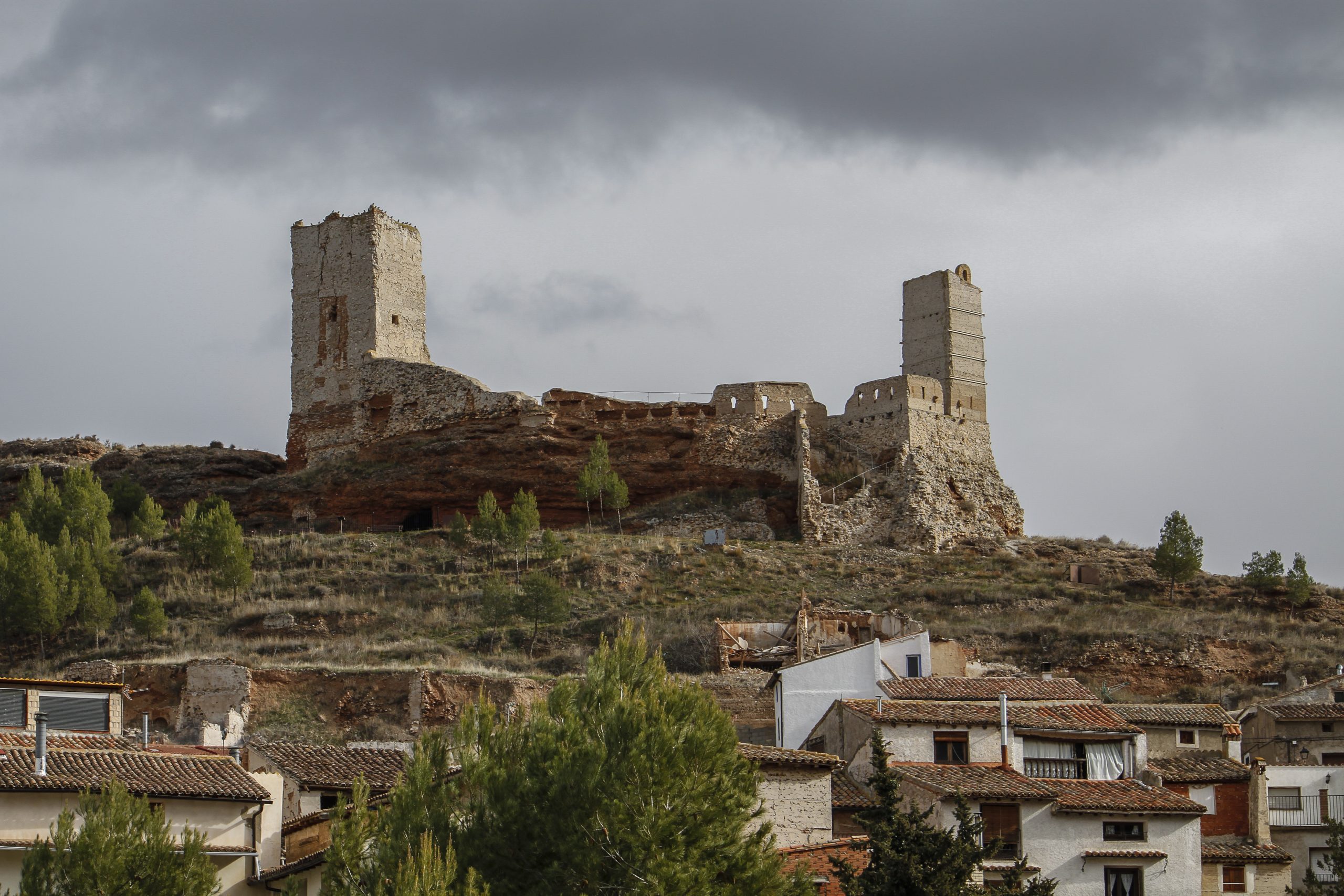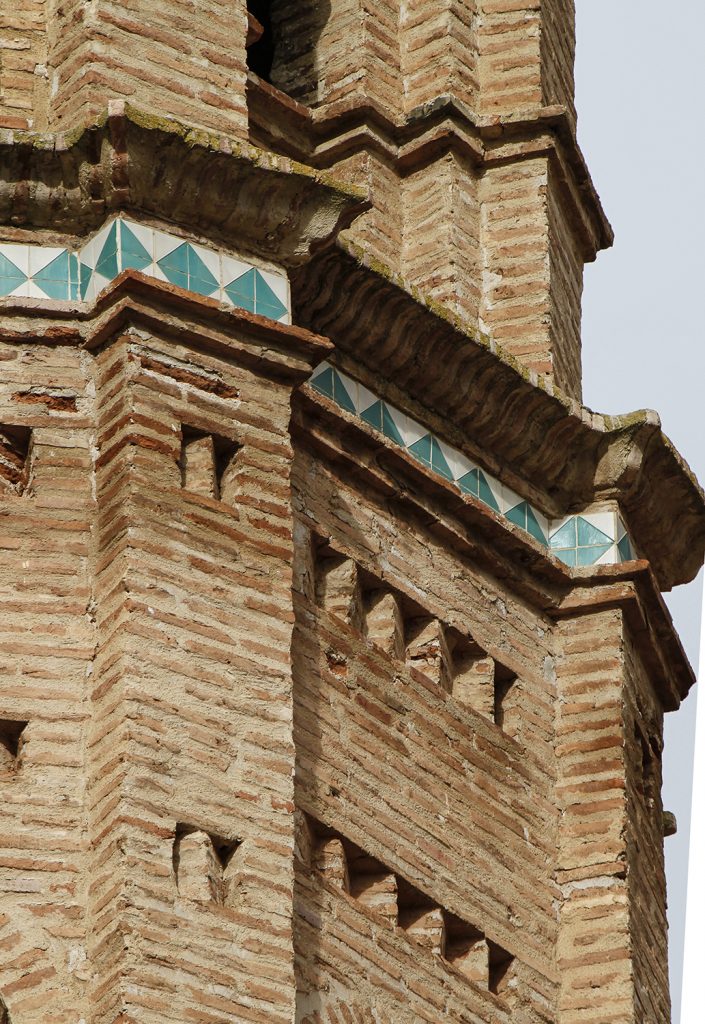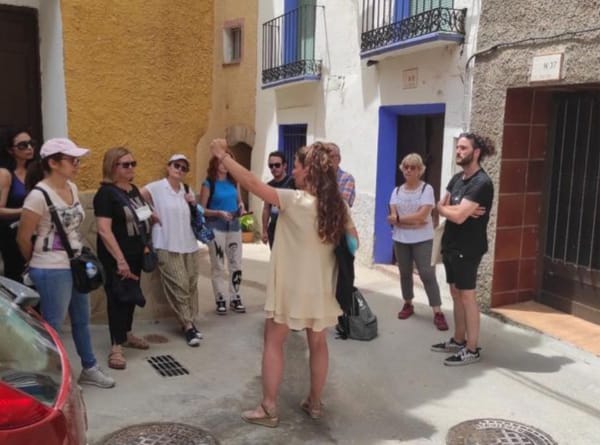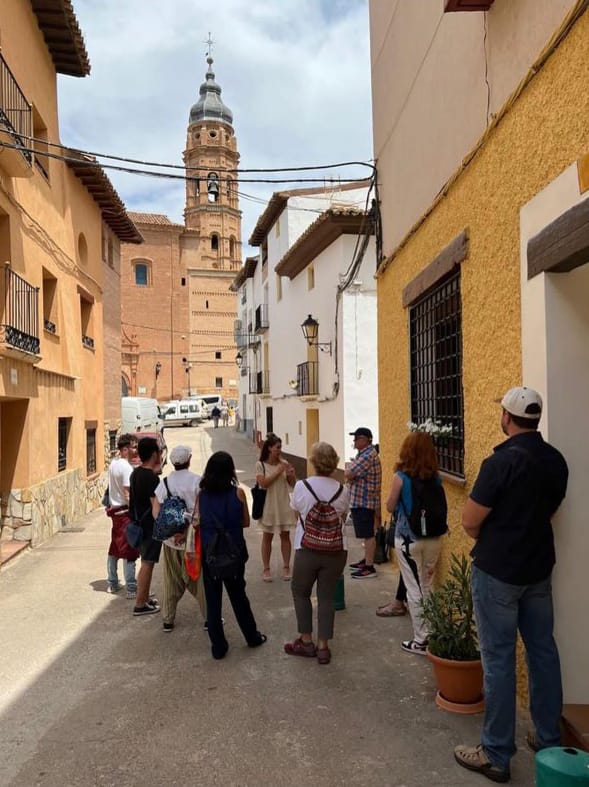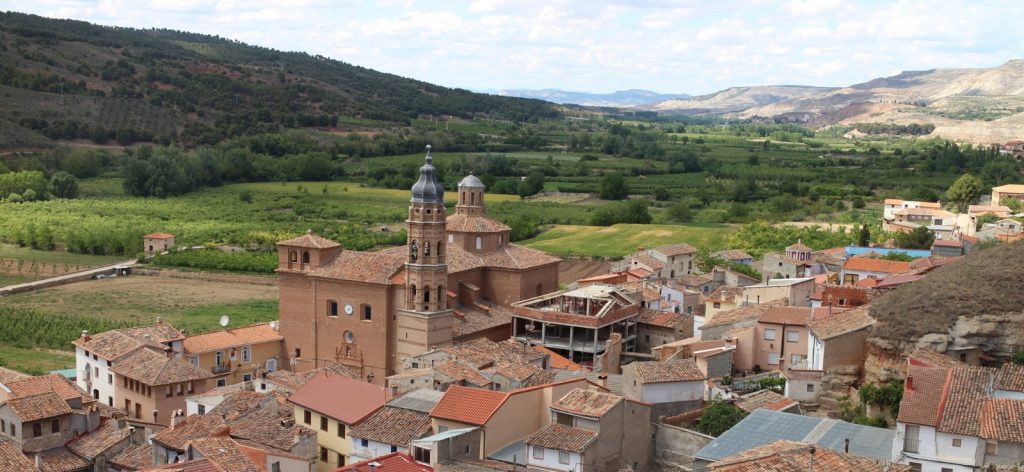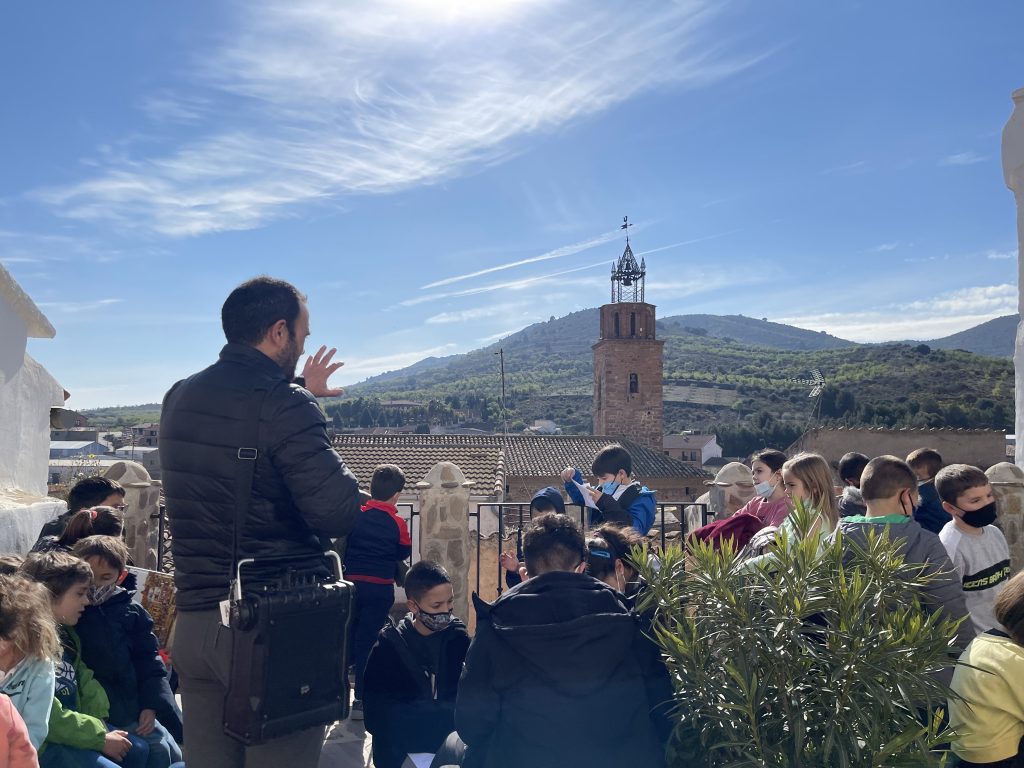

Didactic Mudejar, the guide
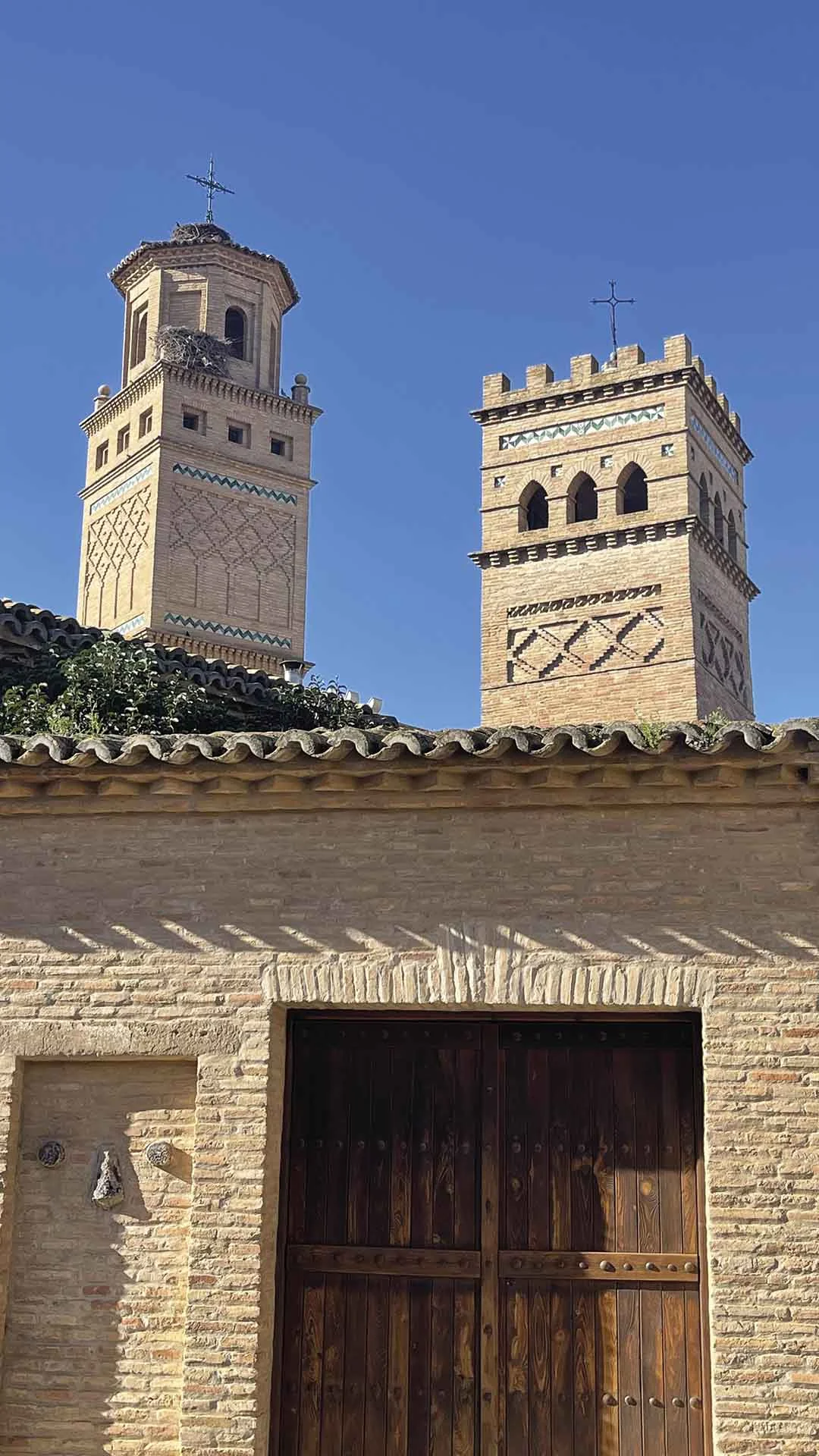
El Castellar: origin of the town and important military enclave
Torres de Berrellén is located in a landscape of singular beauty, next to the mouth of the river Jalón.
The town has its origins in the ancient village of El Castellar; the first Aragonese occupation on the banks of the Ebro built by King Sancho Ramirez in 1080, as a military fortification in the vicinity of the Islamic medina of Saraqusta.
This fortification was of great strategic value in the conquest of Zaragoza, carried out by King Alfonso I the Battler in 1118. The distribution of land to the neighbours, next to the banks of the Ebro, gave rise to the construction of farmhouses or towers that were soon populated, generating different urban centres.
The enclosure is located on a rocky spur of gypsum, which is used as the main building material. The remains of the entrance gate to the enclosure are preserved, as well as evidence of the masonry walls, some dwellings, drainage pipes and burial sites.
El Castellar was gradually depopulated throughout the 15th century, while Torres de Berrellén grew on the other side of the Ebro.
A church with two towers
The parish church of San Andrés dates from the 16th century and is notable for its two bell towers in Mudejar and neo-Mudejar style. The current appearance of the exterior of the Church of San Andrés Apóstol de Torres de Berrellén is the result of the extensive restoration it underwent in the last third of the 20th century by the architect José Luís de la Figuera y Benito, in which the brick walls of the original building were covered with facing brick, a portico was added to the southern façade and a new tower was built at the foot of the same side.
Another element that deserves special mention in the municipality is the towboat, one of the few still in use today. It was built in contemporary times and still allows transit between the two banks of the river Ebro.
More information
Torres de Berrellén Town Council:
Telephone number: 976 653 101 https://torresdeberrellen.net/
VISIT TORRES DE BERRELLÉN
976 653 101
WANT TO KNOW MORE?
Turismo de Aragón
turismodearagon.com
Comarca Ribera Alta del Ebro
turismoriberaaltadelebro.es
Territorio Mudéjar Network
The city council has been a founding member of Territorio Mudéjar since 2025.
Projects Territorio Mudéjar
in Torres de Berrellén
Pedagogy | See the project
Mudéjar didactic, the guide | See the project





